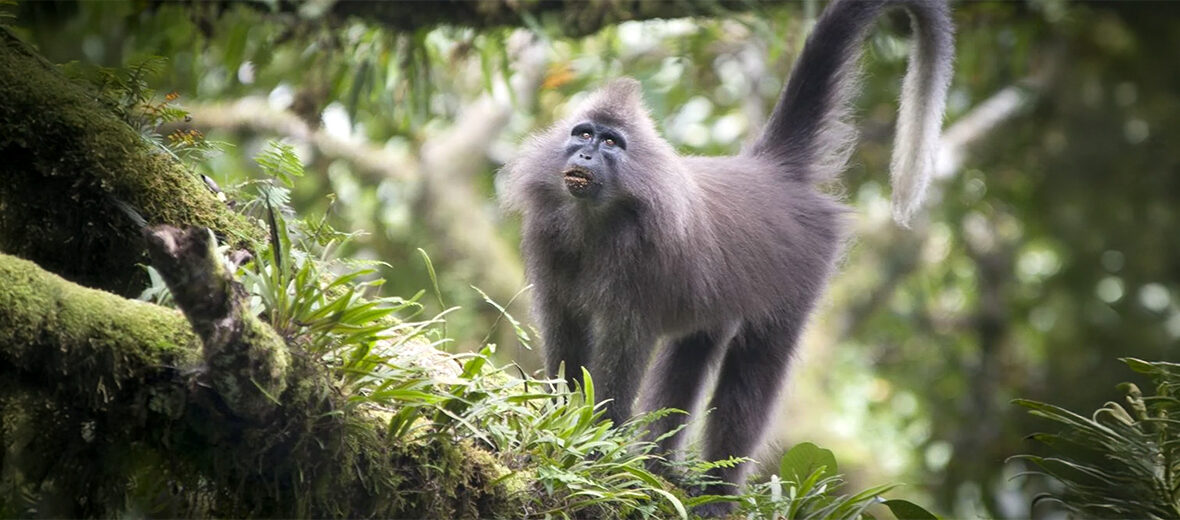
The kipunji, aka highland mangabey, is the first new African monkey species discovered since 1984. They are a species of Old World monkey (those from Africa or Asia) that lives in the highland forests of Tanzania. These primates face the threats of habitat loss and destruction at the hands of farming, logging, and charcoal mining; interruption in daily life from tourism and recreational activities; hunting; trapping; and climate change, that causes habitat shifting and alteration due to storm activity. The IUCN lists these monkeys as Endangered. Their population trend is also listed as decreasing.
First the Stats…
Scientific name: Rungwecebus kipunji
Weight: Up to 35 lbs.
Length: Up to 35 inches, plus up to a 19.65 inch tail
Lifespan: Up to 45 years
Now on to the Facts!
1.) These monkeys are often hunted with log traps and with dogs, primarily as retribution for the crop-raiding of maize (and the leaves of beans and potatoes). Hunting primarily takes place from January – April.
2.) Both Kilombero and Mt. Rungwe Nature Reserves lack proper management resources to aid these primates in their survival.
3.) They were independently described by researchers from the Wildlife Conservation Society, the University of Georgia, and Conservation International, in December 2003 & July 2004.
4.) Zoologists were originally doubtful of the existence of kipunjis until their discovery, seeing as traditional tales of the Nyakyusa people described the monkeys as both real and mythical.
5.) These primates have a rather unique call that is described as a ‘honk-bark’.
But wait, there’s more on the kipunji!
6.) There are around 2,000 individuals living in Tanzania. 1 population in the highland Ndundulu forest in Kilombero Nature Reserve, next to Udzungwa Mountains National Park, and another in a detached population 250 miles away on Mount Rungwe and in Kitulo National Park.
7.) The forest at Rungwe is substantially degraded, and fragmentation of the remaining forest threatens to split that population into 3 even smaller populations.
Did you know…?
In 2006 and 2008 these monkeys were included in the list of “The World’s 25 Most Endangered Primates“.
8.) Their 2 ranges are restricted to a mere 6.8 square miles in total.
9.) Fortunately, due to recent conservation efforts, as of 2022, the Kipunji populations have increased by 65% and threats due to human activities have decreased by 81%!
10.) Females undergo up to a 7 month gestation (pregnancy) that yields a single infant.
11.) Crowned eagles and leopards are their only natural predators.
Now a Short Kipunji Video!
Be sure to share & comment below! Also, check out the Critter Science YouTube channel. Videos added regularly!

Want to suggest a critter for me to write about? Let me know here.
Some source material acquired from: Wikipedia & IUCN
Photo credit: FictionRulezForever Wiki



